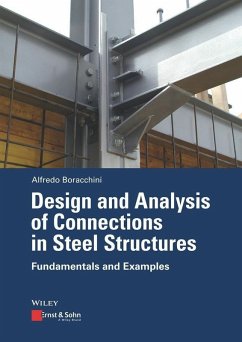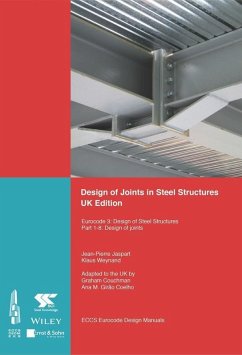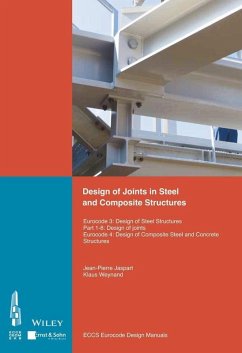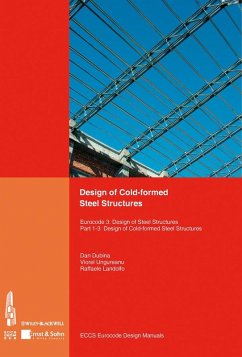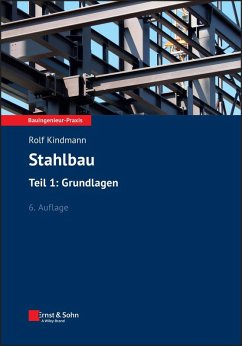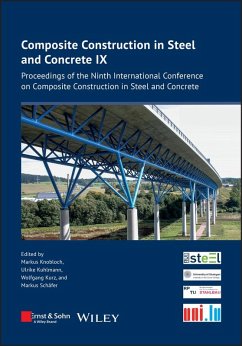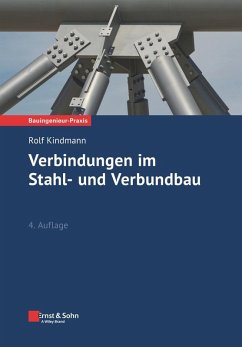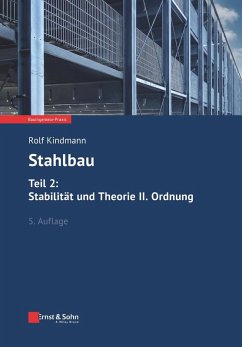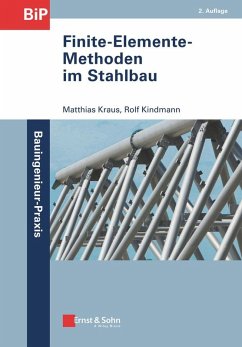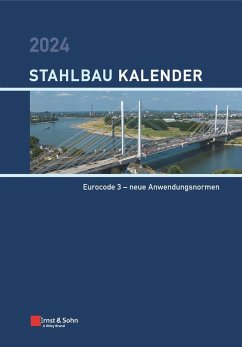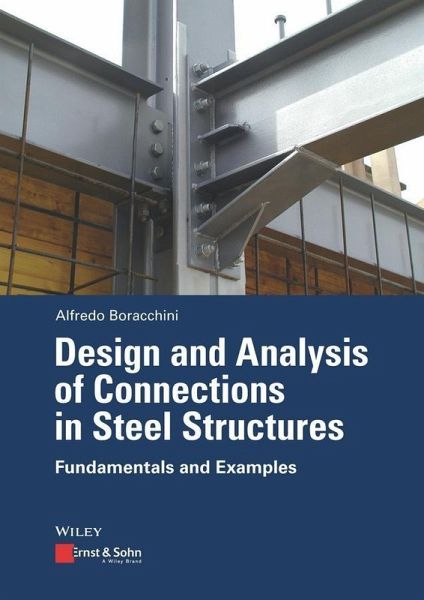
Design and Analysis of Connections in Steel Structures (eBook, PDF)
Fundamentals and Examples
Versandkostenfrei!
Sofort per Download lieferbar
61,99 €
inkl. MwSt.
Weitere Ausgaben:

PAYBACK Punkte
0 °P sammeln!
Dieses Buch führt in alle Aspekte der sicheren Berechnung, Bemessung und Konstruktion von wirtschaftlichen modernen Verbindungen im Stahlbau ein. Die Hintergrunderläuterungen sind nicht an eine spezifische Norm gekoppelt, sondern es werden unterschiedliche Normen und Methoden verglichen, die in der Praxis zur Anwendung kommen, wie z. B. Eurocode, AISC, DIN, BS. Anhand einer Reihe von Beispielen werden Problemlösungen detailliert beschrieben und illustriert. Damit erhält der Leser alle notwendigen Werkzeuge an die Hand, um auch komplexe Probleme bei der Konstruktion von Verbindungen zu lös...
Dieses Buch führt in alle Aspekte der sicheren Berechnung, Bemessung und Konstruktion von wirtschaftlichen modernen Verbindungen im Stahlbau ein. Die Hintergrunderläuterungen sind nicht an eine spezifische Norm gekoppelt, sondern es werden unterschiedliche Normen und Methoden verglichen, die in der Praxis zur Anwendung kommen, wie z. B. Eurocode, AISC, DIN, BS. Anhand einer Reihe von Beispielen werden Problemlösungen detailliert beschrieben und illustriert. Damit erhält der Leser alle notwendigen Werkzeuge an die Hand, um auch komplexe Probleme bei der Konstruktion von Verbindungen zu lösen. Das Buch ist für Berufseinsteiger, für erfahrene Praktiker sowie auch für Stahlbaufachleute eine Arbeitshilfe, denn es werden einfache und komplexe Beanspruchungen an Verbindungen abgebildet. Weniger ausführlich werden Erdbebenauslegung, Schweißnähte, die Wechselwirkung mit anderen Materialien (Beton, Holz) und kalt geformte Verbindungen behandelt.
Dieser Download kann aus rechtlichen Gründen nur mit Rechnungsadresse in D ausgeliefert werden.




